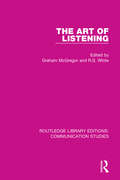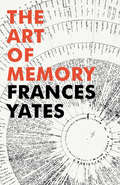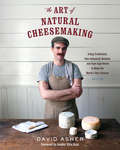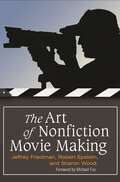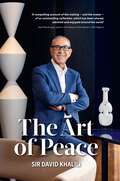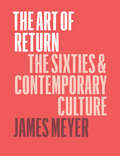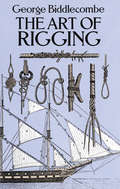- Table View
- List View
The Art of Latina and Latino Elderhood
It is widely recognized that Latinos are a sizable and diverse population and that we are a young demographic. The median age of non-Hispanic white Americans is 58, whereas for Latinos it is 30.Footnote1 Perhaps this partially explains the dearth of attention afforded to the topic of aging Latinos by academic scholarship and the mainstream media. This special issue compellingly alerts us to the reality that there is a growing, aging Latino population about which we know very little and that deserves our attention. I am grateful to Katynka Martínez and Mérida Rúa for curating “The Art of Latina and Latino Elderhood,” since this special issue responds to this significant gap in our knowledge with an exciting set of academic articles and creative contributions that challenges not only our assumptions about Latinos and aging but also our thinking on the types of contributions we include in our journal pages. Katynka and Mérida make the case that the story of Latino elderhood is best conveyed through a truly multidisciplinary and interdisciplinary approach, bringing together public policy, humanistic social sciences, and artistic interventions. So, for the first time, Latino Studies is pleased to feature a novel in progress, a photo essay/dialógo, an artist’s monologue, and a dialogue among actors alongside more traditional academic articles. I think you will agree that this issue before you beautifully conveys why the subject of Latinos and aging should concern all of us, and that it will powerfully spur other researchers and artists to take up the invitation to continue to share new evocative stories about the pleasures, difficulties, and complexities of Latinx later life.Previously published in Latino Studies Volume 19, issue 4, December 2021
The Art of Listening (Routledge Library Editions: Communication Studies)
by Graham McGregor R. S. WhiteOriginally published in 1986. This collection of essays is unified by one leading idea: that the active and creative abilities of listeners and readers deserve as much attention as the skills of speakers and writers. It is shown that hearers, far from being passive recipients in the communicative process, are in fact active in selecting, interpreting and creating from the disparate signals they receive. Equally, readers are involved in creating individual patterns of significance from a text. In presenting this argument, some essays deal with the importance of gender considerations, some with special modes of writing such as the private diary and literary translations, and others with the more familiar fields of poetry and drama. In the sphere of popular music, distinctions such as ‘folk’ and ‘pop’ indicate special problems in assessing the ‘authenticity’ of a listener’s response. By concentrating on active listening, the collection develops and illustrates the conviction that there are fundamental premises underlying the various disciplines under review, the analysis of which makes for a fuller understanding of communication in all its forms.
The Art of Listening (Routledge Library Editions: Communication Studies)
by R. S. WhiteOriginally published in 1986. This collection of essays is unified by one leading idea: that the active and creative abilities of listeners and readers deserve as much attention as the skills of speakers and writers. It is shown that hearers, far from being passive recipients in the communicative process, are in fact active in selecting, interpreting and creating from the disparate signals they receive. Equally, readers are involved in creating individual patterns of significance from a text. In presenting this argument, some essays deal with the importance of gender considerations, some with special modes of writing such as the private diary and literary translations, and others with the more familiar fields of poetry and drama. In the sphere of popular music, distinctions such as ‘folk’ and ‘pop’ indicate special problems in assessing the ‘authenticity’ of a listener’s response. By concentrating on active listening, the collection develops and illustrates the conviction that there are fundamental premises underlying the various disciplines under review, the analysis of which makes for a fuller understanding of communication in all its forms.
Art of Living, Art of Dying: Spiritual Care for a Good Death
by Carlo LegetTalking about dying and death can be difficult for those facing the end of life. This book presents a model and offers examples for discussing existential questions with patients receiving end-of-life care. Updating the Ars Moriendi tradition, this book offers a non-judgemental approach for supporting people through the spiritual aspects of dying.
The Art of Memory
by Frances A YatesThis unique and brilliant book is a history of human knowledge. Before the invention of printing, a trained memory was of vital importance. Based on a technique of impressing 'places' and 'images' on the mind, the ancient Greeks created an elaborate memory system which in turn was inherited by the Romans and passed into the European tradition, to be revived, in occult form, during the Renaissance. Frances Yates sheds light on Dante’s Divine Comedy, the form of the Shakespearian theatre and the history of ancient architecture; The Art of Memory is an invaluable contribution to aesthetics and psychology, and to the history of philosophy, of science and of literature.
The Art of Moral Protest: Culture, Biography, and Creativity in Social Movements
by James M. JasperIn The Art of Moral Protest, James Jasper integrates diverse examples of protest—from nineteenth-century boycotts to recent movements—into a distinctive new understanding of how social movements work. Jasper highlights their creativity, not only in forging new morals but in adopting courses of action and inventing organizational forms. "A provocative perspective on the cultural implications of political and social protest."—Library Journal
The Art of Moral Protest: Culture, Biography, and Creativity in Social Movements
by James M. JasperIn The Art of Moral Protest, James Jasper integrates diverse examples of protest—from nineteenth-century boycotts to recent movements—into a distinctive new understanding of how social movements work. Jasper highlights their creativity, not only in forging new morals but in adopting courses of action and inventing organizational forms. "A provocative perspective on the cultural implications of political and social protest."—Library Journal
The Art of Moral Protest: Culture, Biography, and Creativity in Social Movements
by James M. JasperIn The Art of Moral Protest, James Jasper integrates diverse examples of protest—from nineteenth-century boycotts to recent movements—into a distinctive new understanding of how social movements work. Jasper highlights their creativity, not only in forging new morals but in adopting courses of action and inventing organizational forms. "A provocative perspective on the cultural implications of political and social protest."—Library Journal
The Art of Museum Exhibitions: How Story and Imagination Create Aesthetic Experiences
by Leslie BedfordLeslie Bedford, former director of the highly regarded Bank Street College museum leadership program, expands the museum professional’s vision of exhibitions beyond the simple goal of transmitting knowledge to the visitor. Her view of exhibitions as interactive, emotional, embodied, imaginative experiences opens a new vista for those designing them. Using examples both from her own work at the Boston Children’s Museum and from other institutions around the globe, Bedford offers the museum professional a bold new vision built around narrative, imagination, and aesthetics, merging the work of the educator with that of the artist. It is important reading for all museum professionals.
The Art of Museum Exhibitions: How Story and Imagination Create Aesthetic Experiences
by Leslie BedfordLeslie Bedford, former director of the highly regarded Bank Street College museum leadership program, expands the museum professional’s vision of exhibitions beyond the simple goal of transmitting knowledge to the visitor. Her view of exhibitions as interactive, emotional, embodied, imaginative experiences opens a new vista for those designing them. Using examples both from her own work at the Boston Children’s Museum and from other institutions around the globe, Bedford offers the museum professional a bold new vision built around narrative, imagination, and aesthetics, merging the work of the educator with that of the artist. It is important reading for all museum professionals.
The Art of Natural Cheesemaking: Using Traditional, Non-Industrial Methods and Raw Ingredients to Make the World's Best Cheeses
by David Asher Sandor Ellix KatzIncluding more than 35 step-by-step recipes from the Black Sheep School of Cheesemaking Most DIY cheesemaking books are hard to follow, complicated, and confusing, and call for the use of packaged freeze-dried cultures, chemical additives, and expensive cheesemaking equipment. For though bread baking has its sourdough, brewing its lambic ales, and pickling its wild fermentation, standard Western cheesemaking practice today is decidedly unnatural. In The Art of Natural Cheesemaking, David Asher practices and preaches a traditional, but increasingly countercultural, way of making cheese—one that is natural and intuitive, grounded in ecological principles and biological science. This book encourages home and small-scale commercial cheesemakers to take a different approach by showing them: • How to source good milk, including raw milk; • How to keep their own bacterial starter cultures and fungal ripening cultures; • How make their own rennet—and how to make good cheese without it; • How to avoid the use of plastic equipment and chemical additives; and • How to use appropriate technologies. Introductory chapters explore and explain the basic elements of cheese: milk, cultures, rennet, salt, tools, and the cheese cave. The fourteen chapters that follow each examine a particular class of cheese, from kefir and paneer to washed-rind and alpine styles, offering specific recipes and handling advice. The techniques presented are direct and thorough, fully illustrated with hand-drawn diagrams and triptych photos that show the transformation of cheeses in a comparative and dynamic fashion. The Art of Natural Cheesemaking is the first cheesemaking book to take a political stance against Big Dairy and to criticize both standard industrial and artisanal cheesemaking practices. It promotes the use of ethical animal rennet and protests the use of laboratory-grown freeze-dried cultures. It also explores how GMO technology is creeping into our cheese and the steps we can take to stop it. This book sounds a clarion call to cheesemakers to adopt more natural, sustainable practices. It may well change the way we look at cheese, and how we make it ourselves.
The Art of Nonfiction Movie Making
by Jeffrey Friedman Rob Epstein Sharon WoodThe past few years have featured such blockbusters as Super-Size Me, Fahrenheit 9/11, Sicko, March of the Penguins, and An Inconvenient Truth. And as news articles proclaim a new era in the history of documentary films, more and more new directors are making their first film a nonfiction one. But in addition to posing all of the usual challenges inherent to more standard filmmaking, documentaries also present unique problems that need to be understood from the outset. Where does the idea come from? How do you raise the money? How much money do you need? What visual style is best suited to the story? What are the legal issues involved? And how can a film reach that all-important milestone and find a willing distributor? Epstein, Friedman, and Wood tackle all of these important questions with examples and anecdotes from their own careers. The result is an informative and entertaining guide for those just starting out, and an enlightening read for anyone interested in a behind-the-scenes look at this newly reinvigorated field of film.
The Art of Nonfiction Movie Making
by Jeffrey Friedman Rob Epstein Sharon WoodThe past few years have featured such blockbusters as Super-Size Me, Fahrenheit 9/11, Sicko, March of the Penguins, and An Inconvenient Truth. And as news articles proclaim a new era in the history of documentary films, more and more new directors are making their first film a nonfiction one. But in addition to posing all of the usual challenges inherent to more standard filmmaking, documentaries also present unique problems that need to be understood from the outset. Where does the idea come from? How do you raise the money? How much money do you need? What visual style is best suited to the story? What are the legal issues involved? And how can a film reach that all-important milestone and find a willing distributor? Epstein, Friedman, and Wood tackle all of these important questions with examples and anecdotes from their own careers. The result is an informative and entertaining guide for those just starting out, and an enlightening read for anyone interested in a behind-the-scenes look at this newly reinvigorated field of film.
The Art of Peace
by Sir David KhaliliIn 1967, Sir David Khalili finished his military service in Iran and travelled to study in the United States with $750 - his remaining royalties from a book he wrote when he was just 14. Over the course of the next five decades he single-handedly, piece by piece, assembled eight of the finest art collections in their field, ultimately becoming one of the world's greatest collectors, about whom Queen Elizabeth II once said: 'It is scary how much this gentleman knows about art.'For the first time, Sir David shares his extraordinary journey: one that has taken him through the souks of North Africa, the auction houses of Europe and the United States, the bazaars of South Asia, and far beyond. Through a riveting collection of real-life adventures, he reveals his collecting strategy, business ethics and what motivates him to continuously collect, conserve, research, publish and exhibit the treasures in his collections. Through his story, Sir David questions how the undeniable power of art can be harnessed to foster greater peace and unity worldwide. No one is better placed to enlighten us.
The Art of Post-Dictatorship: Ethics and Aesthetics in Transitional Argentina
by Vikki BellSince the end of the last dictatorship in 1983, Argentina’s visual artists and art-activists have been central to campaigns to demand the criminal prosecution of those initially granted amnesty and to a variety of commemorative projects. In The Art of Post-Dictatorship: Ethics and Aesthetics in Transitional Argentina Vikki Bell examines this involvement and intervention. She argues that the problematics that arise within the aesthetic realm cannot be understood solely through an art-historical approach; instead, they must be understood as a constitutive part of a broader collective endeavour. In this sense, the ‘art’ of post-dictatorship is not something that belongs to art or the artists themselves, but is about how the subjectivities and imaginations of new generations are constituted and entwined with questions of response, ethics and justice. It concerns how people align themselves between the past and the future. This book will be an invaluable resource for those studying the law, politics, art and sociology of contemporary Argentina as well as those concerned more widely with transitional justice and the politics of memory.
The Art of Post-Dictatorship: Ethics and Aesthetics in Transitional Argentina
by Vikki BellSince the end of the last dictatorship in 1983, Argentina’s visual artists and art-activists have been central to campaigns to demand the criminal prosecution of those initially granted amnesty and to a variety of commemorative projects. In The Art of Post-Dictatorship: Ethics and Aesthetics in Transitional Argentina Vikki Bell examines this involvement and intervention. She argues that the problematics that arise within the aesthetic realm cannot be understood solely through an art-historical approach; instead, they must be understood as a constitutive part of a broader collective endeavour. In this sense, the ‘art’ of post-dictatorship is not something that belongs to art or the artists themselves, but is about how the subjectivities and imaginations of new generations are constituted and entwined with questions of response, ethics and justice. It concerns how people align themselves between the past and the future. This book will be an invaluable resource for those studying the law, politics, art and sociology of contemporary Argentina as well as those concerned more widely with transitional justice and the politics of memory.
The Art of Public Space: Curating and Re-imagining the Ephemeral City
by Kim GurneyA journey through Johannesburg via three art projects raises intriguing notions about the constitutive relationship between the city, imagination and the public sphere- through walking, gaming and performance art. Amid prevailing economic validations, the trilogy posits art within an urban commons in which imagination is all-important.
The Art of Resistance: Cultural Protest against the Austrian Far Right in the Early Twenty-First Century (Austrian and Habsburg Studies #21)
by Allyson FiddlerWell before the far-right resurgence that has most recently transformed European politics, Austria’s 1999 parliamentary elections surprised the world with the unexpected success of the Freedom Party of Austria and its charismatic leader, Jörg Haider. The party’s perceived xenophobia, isolationism, and unabashed nationalism in turn inspired a massive protest movement that expressed opposition not only through street protests but also in novels, plays, films, and music. Through careful readings of this varied cultural output, The Art of Resistance traces the aesthetic styles and strategies deployed during this time, providing critical context for understanding modern Austrian history as well as the European protest movements of today.
The Art of Return: The Sixties and Contemporary Culture
by James MeyerMore than any other decade, the sixties capture our collective cultural imagination. And while many Americans can immediately imagine the sound of Martin Luther King Jr. declaring “I have a dream!” or envision hippies placing flowers in gun barrels, the revolutionary sixties resonates around the world: China’s communist government inaugurated a new cultural era, African nations won independence from colonial rule, and students across Europe took to the streets, calling for an end to capitalism, imperialism, and the Vietnam War. In this innovative work, James Meyer turns to art criticism, theory, memoir, and fiction to examine the fascination with the long sixties and contemporary expressions of these cultural memories across the globe. Meyer draws on a diverse range of cultural objects that reimagine this revolutionary era stretching from the 1950s to the 1970s, including reenactments of civil rights, antiwar, and feminist marches, paintings, sculptures, photographs, novels, and films. Many of these works were created by artists and writers born during the long Sixties who were driven to understand a monumental era that they missed. These cases show us that the past becomes significant only in relation to our present, and our remembered history never perfectly replicates time past. This, Meyer argues, is precisely what makes our contemporary attachment to the past so important: it provides us a critical opportunity to examine our own relationship to history, memory, and nostalgia.
The Art of Return: The Sixties and Contemporary Culture
by James MeyerMore than any other decade, the sixties capture our collective cultural imagination. And while many Americans can immediately imagine the sound of Martin Luther King Jr. declaring “I have a dream!” or envision hippies placing flowers in gun barrels, the revolutionary sixties resonates around the world: China’s communist government inaugurated a new cultural era, African nations won independence from colonial rule, and students across Europe took to the streets, calling for an end to capitalism, imperialism, and the Vietnam War. In this innovative work, James Meyer turns to art criticism, theory, memoir, and fiction to examine the fascination with the long sixties and contemporary expressions of these cultural memories across the globe. Meyer draws on a diverse range of cultural objects that reimagine this revolutionary era stretching from the 1950s to the 1970s, including reenactments of civil rights, antiwar, and feminist marches, paintings, sculptures, photographs, novels, and films. Many of these works were created by artists and writers born during the long Sixties who were driven to understand a monumental era that they missed. These cases show us that the past becomes significant only in relation to our present, and our remembered history never perfectly replicates time past. This, Meyer argues, is precisely what makes our contemporary attachment to the past so important: it provides us a critical opportunity to examine our own relationship to history, memory, and nostalgia.
The Art of Return: The Sixties and Contemporary Culture
by James MeyerMore than any other decade, the sixties capture our collective cultural imagination. And while many Americans can immediately imagine the sound of Martin Luther King Jr. declaring “I have a dream!” or envision hippies placing flowers in gun barrels, the revolutionary sixties resonates around the world: China’s communist government inaugurated a new cultural era, African nations won independence from colonial rule, and students across Europe took to the streets, calling for an end to capitalism, imperialism, and the Vietnam War. In this innovative work, James Meyer turns to art criticism, theory, memoir, and fiction to examine the fascination with the long sixties and contemporary expressions of these cultural memories across the globe. Meyer draws on a diverse range of cultural objects that reimagine this revolutionary era stretching from the 1950s to the 1970s, including reenactments of civil rights, antiwar, and feminist marches, paintings, sculptures, photographs, novels, and films. Many of these works were created by artists and writers born during the long Sixties who were driven to understand a monumental era that they missed. These cases show us that the past becomes significant only in relation to our present, and our remembered history never perfectly replicates time past. This, Meyer argues, is precisely what makes our contemporary attachment to the past so important: it provides us a critical opportunity to examine our own relationship to history, memory, and nostalgia.
The Art of Return: The Sixties and Contemporary Culture
by James MeyerMore than any other decade, the sixties capture our collective cultural imagination. And while many Americans can immediately imagine the sound of Martin Luther King Jr. declaring “I have a dream!” or envision hippies placing flowers in gun barrels, the revolutionary sixties resonates around the world: China’s communist government inaugurated a new cultural era, African nations won independence from colonial rule, and students across Europe took to the streets, calling for an end to capitalism, imperialism, and the Vietnam War. In this innovative work, James Meyer turns to art criticism, theory, memoir, and fiction to examine the fascination with the long sixties and contemporary expressions of these cultural memories across the globe. Meyer draws on a diverse range of cultural objects that reimagine this revolutionary era stretching from the 1950s to the 1970s, including reenactments of civil rights, antiwar, and feminist marches, paintings, sculptures, photographs, novels, and films. Many of these works were created by artists and writers born during the long Sixties who were driven to understand a monumental era that they missed. These cases show us that the past becomes significant only in relation to our present, and our remembered history never perfectly replicates time past. This, Meyer argues, is precisely what makes our contemporary attachment to the past so important: it provides us a critical opportunity to examine our own relationship to history, memory, and nostalgia.
The Art of Return: The Sixties and Contemporary Culture
by James MeyerMore than any other decade, the sixties capture our collective cultural imagination. And while many Americans can immediately imagine the sound of Martin Luther King Jr. declaring “I have a dream!” or envision hippies placing flowers in gun barrels, the revolutionary sixties resonates around the world: China’s communist government inaugurated a new cultural era, African nations won independence from colonial rule, and students across Europe took to the streets, calling for an end to capitalism, imperialism, and the Vietnam War. In this innovative work, James Meyer turns to art criticism, theory, memoir, and fiction to examine the fascination with the long sixties and contemporary expressions of these cultural memories across the globe. Meyer draws on a diverse range of cultural objects that reimagine this revolutionary era stretching from the 1950s to the 1970s, including reenactments of civil rights, antiwar, and feminist marches, paintings, sculptures, photographs, novels, and films. Many of these works were created by artists and writers born during the long Sixties who were driven to understand a monumental era that they missed. These cases show us that the past becomes significant only in relation to our present, and our remembered history never perfectly replicates time past. This, Meyer argues, is precisely what makes our contemporary attachment to the past so important: it provides us a critical opportunity to examine our own relationship to history, memory, and nostalgia.
The Art of Return: The Sixties and Contemporary Culture
by James MeyerMore than any other decade, the sixties capture our collective cultural imagination. And while many Americans can immediately imagine the sound of Martin Luther King Jr. declaring “I have a dream!” or envision hippies placing flowers in gun barrels, the revolutionary sixties resonates around the world: China’s communist government inaugurated a new cultural era, African nations won independence from colonial rule, and students across Europe took to the streets, calling for an end to capitalism, imperialism, and the Vietnam War. In this innovative work, James Meyer turns to art criticism, theory, memoir, and fiction to examine the fascination with the long sixties and contemporary expressions of these cultural memories across the globe. Meyer draws on a diverse range of cultural objects that reimagine this revolutionary era stretching from the 1950s to the 1970s, including reenactments of civil rights, antiwar, and feminist marches, paintings, sculptures, photographs, novels, and films. Many of these works were created by artists and writers born during the long Sixties who were driven to understand a monumental era that they missed. These cases show us that the past becomes significant only in relation to our present, and our remembered history never perfectly replicates time past. This, Meyer argues, is precisely what makes our contemporary attachment to the past so important: it provides us a critical opportunity to examine our own relationship to history, memory, and nostalgia.
The Art of Rigging
by George Biddlecombe"Few, today, can realize how important was the art of rigging a ship and reeving her gear in the days just old when all aloft was wood and hemp; or how great the part it has played in the building of Empire." — Introduction.Although mastery of the art of rigging is no longer required on board today's ships, legions of serious model ship builders who wish to rig their ships correctly need to learn the art in miniature. This book is widely considered the best manual ever produced on rigging the sailing ship. It is based on the extensively revised and updated 1848 edition prepared by Captain George Biddlecombe, a Master in the Royal Navy and former merchant seaman. The book is divided into five parts:The First Part contains an alphabetical explanation of terms and phrases used in rigging. The Second Part consists of directions for the performance of operations incidental to rigging and preparing it on shore, with a table of the comparative strength of chain and rope. The Third Part contains the progressive method of rigging ships. The Fourth Part contains a description of reeving the running rigging and bending the sails in addition to the rigging of brigs, yachts, and small vessels. The Fifth Part comprises tables of the quantities and dimensions of the standing and running rigging of ships, brigs, fore-and-aft schooners, and cutters, with the species, size, and number of blocks, hearts, dead-eyes, etc.Serious modelists, naval historians, armchair skippers — any sailing buff — will want to own a copy of The Art of Rigging. Complete and wonderfully clear, it is now available in its first inexpensive paperback edition. It belongs in every maritime library.

